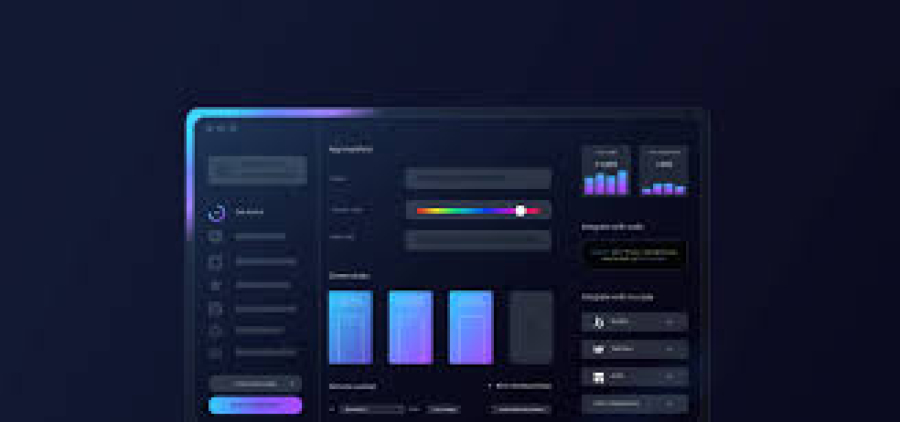How to Optimize Checkout Flow to Increase Sales
In the highly competitive e-commerce landscape, the checkout process plays a crucial role in converting potential customers into paying ones. A smooth and optimized checkout flow can significantly reduce cart abandonment rates, increase sales, and improve the overall customer experience. As a freelancer or e-commerce business owner, understanding how to optimize your checkout process is essential for maximizing your revenue and enhancing customer satisfaction. In this article, we will discuss the most effective strategies and best practices for optimizing the checkout flow of your online store, ensuring you capture every sale and provide a seamless, hassle-free shopping experience.
Long Description:
1. Understand the Importance of Checkout Flow Optimization
The checkout process is often the final step in an e-commerce transaction, and any friction or delays during this stage can lead to cart abandonment. Studies show that up to 70% of customers abandon their carts before completing a purchase, and a poor checkout experience is one of the primary reasons behind this. Optimizing your checkout flow can significantly lower abandonment rates, increase conversion rates, and ultimately drive higher sales. A streamlined, user-friendly process builds trust with customers, making them more likely to complete their purchase.
2. Simplify the Checkout Process
One of the most effective ways to optimize your checkout flow is by reducing the number of steps required to complete a purchase. A long or complicated checkout process can discourage potential customers from completing their orders. Aim for a one-page checkout or a minimal number of steps, ensuring that customers don’t feel overwhelmed. Keep the form fields to a minimum and only ask for the essential information. This helps prevent friction, encourages faster completion, and enhances the overall shopping experience.
3. Offer Guest Checkout Options
Forcing customers to create an account before making a purchase can lead to frustration and abandoned carts. Offering a guest checkout option allows customers to make a purchase without having to sign up, which can increase conversion rates, especially for first-time buyers. For returning customers, you can offer the option to log in for a faster checkout experience, but always prioritize convenience and speed over requiring account creation.
4. Provide Multiple Payment Options
Another crucial aspect of optimizing your checkout flow is offering a variety of payment methods. Different customers prefer different payment options, and providing multiple choices can help cater to a broader audience. Make sure to include popular payment methods like credit cards, PayPal, Apple Pay, and even alternative payment options like cryptocurrencies if relevant to your market. Offering local payment methods based on your target audience's region can further enhance the user experience and drive conversions.
5. Optimize for Mobile Devices
With more people shopping on mobile devices, ensuring that your checkout process is mobile-friendly is essential. A mobile-optimized checkout flow ensures that customers can easily navigate your store and complete their purchase on smartphones and tablets. Mobile-friendly design includes responsive layouts, touch-friendly buttons, and easy-to-read fonts. A poor mobile experience can result in lost sales, so testing and optimizing for mobile is a must.
6. Offer Clear Shipping Information
Shipping costs and delivery times are often a significant concern for online shoppers. Make sure that shipping options, costs, and delivery times are clearly displayed throughout the checkout process. Customers should know exactly how much they will pay for shipping before they reach the final step. If possible, offer free shipping or include it as an incentive to increase the perceived value of the purchase.
7. Show Security and Trust Signals
Security is a top concern for online shoppers. Display trust signals such as SSL certificates, secure payment options, and industry-standard security badges to reassure customers that their personal and payment information is safe. A transparent and secure checkout process builds customer confidence, making them more likely to complete their purchase.
8. Include a Progress Indicator
During the checkout process, a progress indicator that shows customers how far along they are in the process can reduce uncertainty and frustration. Customers are more likely to complete their purchase when they have a clear idea of how many steps are left and how long the process will take. A simple progress bar or step indicator can significantly enhance the user experience.
9. Enable Auto-Fill and Address Lookup
Time is precious, and customers appreciate anything that makes their checkout process faster. Enabling auto-fill for personal information (such as name, email, and shipping address) and integrating address lookup tools can save time and reduce errors. This will make it easier for customers to complete their checkout quickly and efficiently.
10. Provide Order Summaries and Easy Edits
Before finalizing the purchase, offer a detailed order summary that includes items, prices, taxes, shipping costs, and total cost. Allow customers to easily modify their order if they need to change quantities, remove items, or update shipping information. This flexibility improves the user experience and prevents users from abandoning their cart due to mistakes or unclear information.
11. Offer Incentives and Discounts
Encouraging customers to complete their purchase by offering incentives can be highly effective. Consider implementing promo codes, discount offers, or loyalty rewards at the checkout stage. Offering a limited-time discount or free shipping for a minimum purchase can incentivize customers to complete their order and increase your average order value (AOV).
12. Test Your Checkout Flow Regularly
Once you’ve implemented changes to your checkout process, it’s crucial to test the user experience regularly. Conduct A/B testing to evaluate the effectiveness of different checkout layouts, payment methods, and other elements. Gather feedback from real customers and monitor your conversion rates to ensure that your checkout flow is optimized for maximum sales.
13. Implement Exit-Intent Popups
To capture potentially lost sales, consider using exit-intent popups that appear when a customer is about to leave the site. These popups can offer discounts, remind customers about their abandoned cart, or prompt them to complete their checkout. It’s a great way to reduce cart abandonment and increase conversions by re-engaging customers before they leave.
14. Track and Analyze Your Checkout Data
To continuously improve your checkout flow, track and analyze key performance indicators (KPIs) such as cart abandonment rate, conversion rate, and average order value. Use analytics tools like Google Analytics or e-commerce platforms’ built-in reporting tools to identify where customers drop off and where improvements are needed. This data will help you make informed decisions to further optimize the checkout process.


 by Emily
by Emily




